Jewels of Bohemia - May 23 - June 6, 2018
(Czech Republic, Slovakia, Hungary)
Part Three, Hungary
Page Eight -
Budapest continued

Castle Hill on the Buda side of Budapest
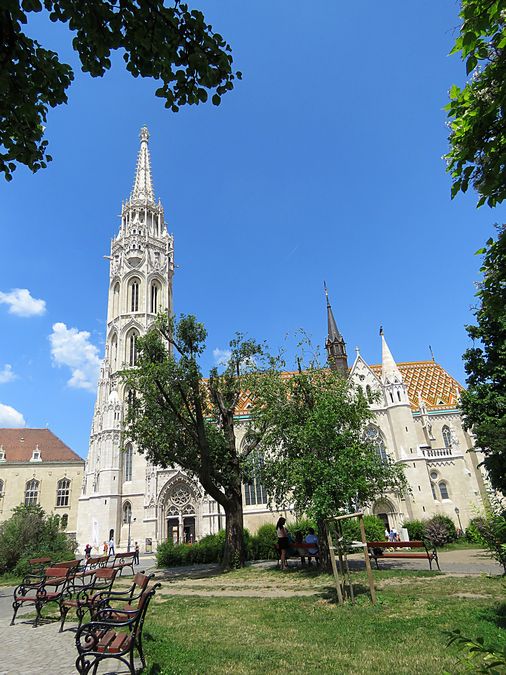
Matthias Church, Roman Catholic church located in Budapest,
in front of the
Fisherman's Bastion at the heart of Buda's
Castle District. According to church tradition, it was originally
built in Romanesque style in 1015, although no archaeological
remains exist. The current building was constructed in the late
Gothic style in the 2nd half of the 14th century and was restored
in the late 19th century. It was the second largest church of medieval
Buda and
the seventh largest church of the medieval Hungarian Kingdom.
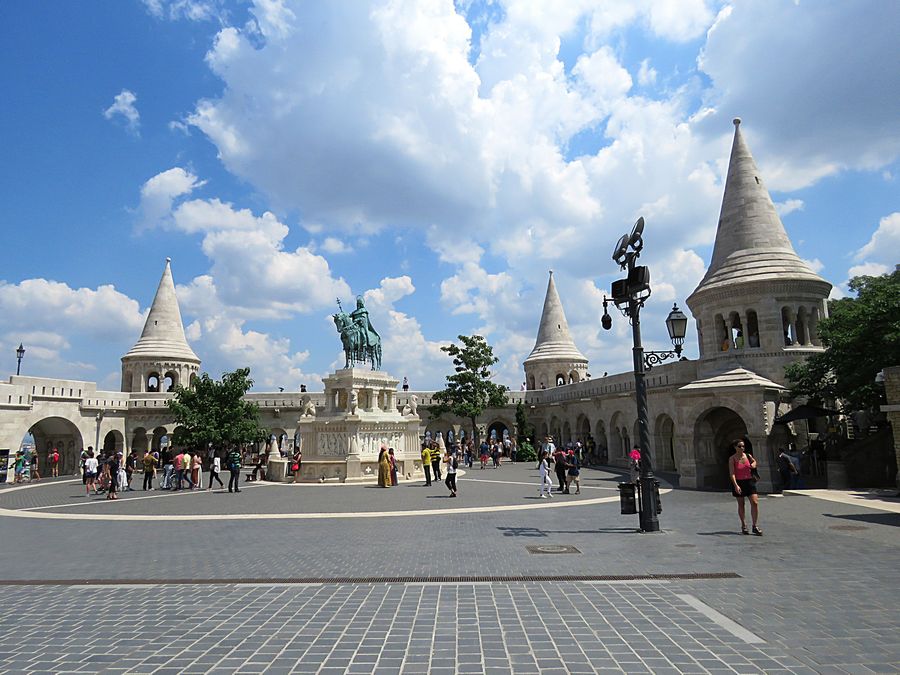
Fisherman's Bastion is a terrace in neo-Gothic and neo-Romanesque
style situated on the Buda
bank of the Danube,
on the Castle hill in Budapest, around Matthias Church. It was designed
and built between 1895 and 1902. A bronze statue of
Stephen I of Hungary mounted on a horse, erected in 1906,
can be seen between
the Bastion and the Matthias Church.

View of Budapest (the Pest side) from Fisherman's Bastion.
Its seven towers represent the seven Magyar tribes that settled in the Carpathian
Basin in 895. From the towers and the terrace, there is a panoramic view of the
Danube, Pest, and the Gellert Hill.
The Buda side castle wall was protected by the fishermen's guild, and this is the
reason why it was called Fishermen's Bastion. Other people say, it got the name
from the part of the city, which lies beneath the tower. The guild of fishermen
was responsible for defending this stretch of the city walls in the Middle Ages.
It is a viewing terrace, with many stairs and walking paths.
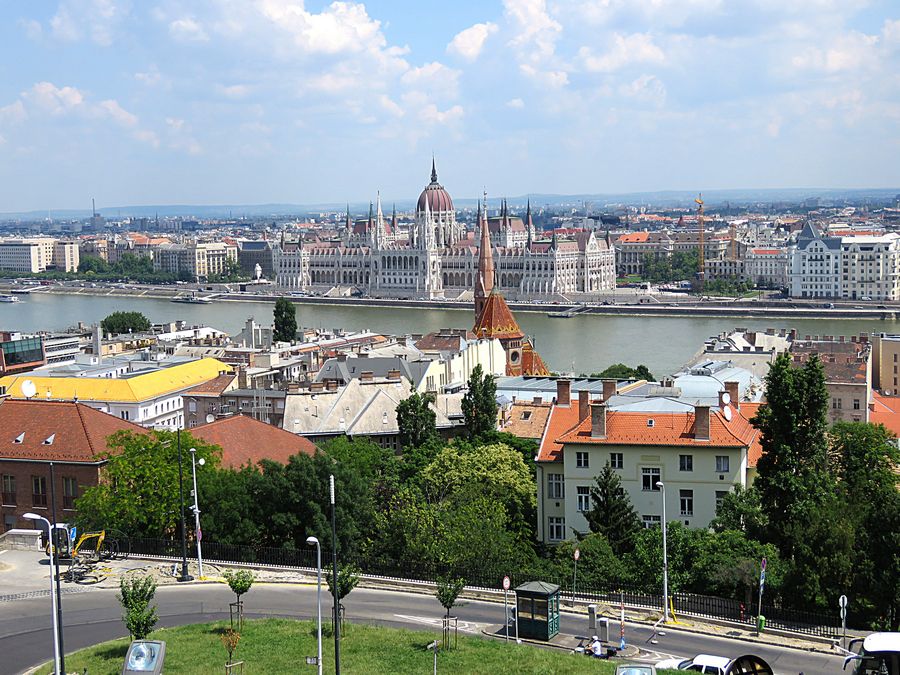
The Hungarian Parliament from Fisherman's Bastion

Closeup of the large Parliament building. It is
large because Hungary was a lot bigger until
it was reduced in size after WWI.
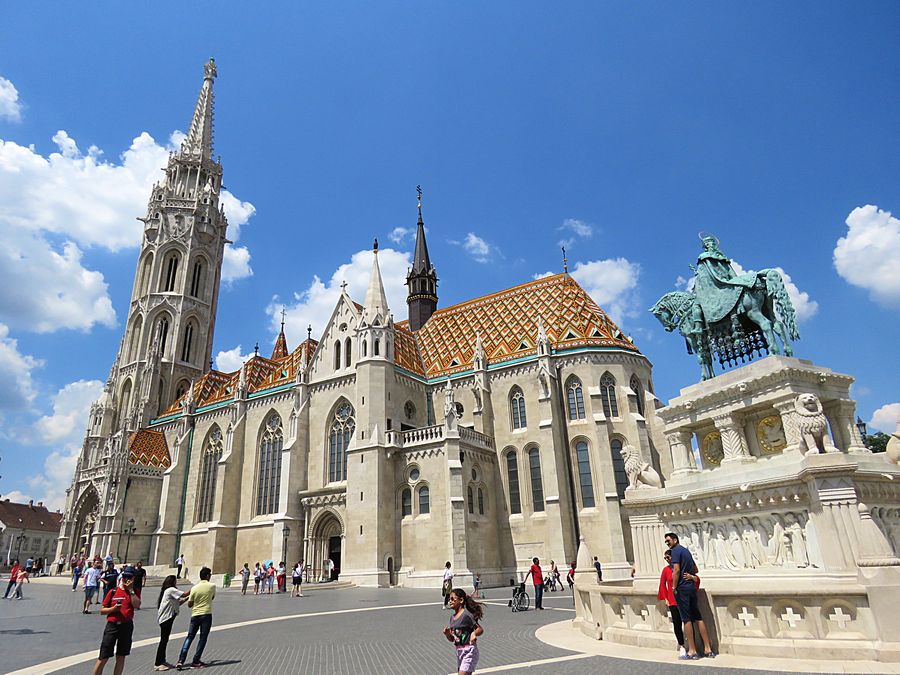
View of Matthias Church from Fisherman's Bastion
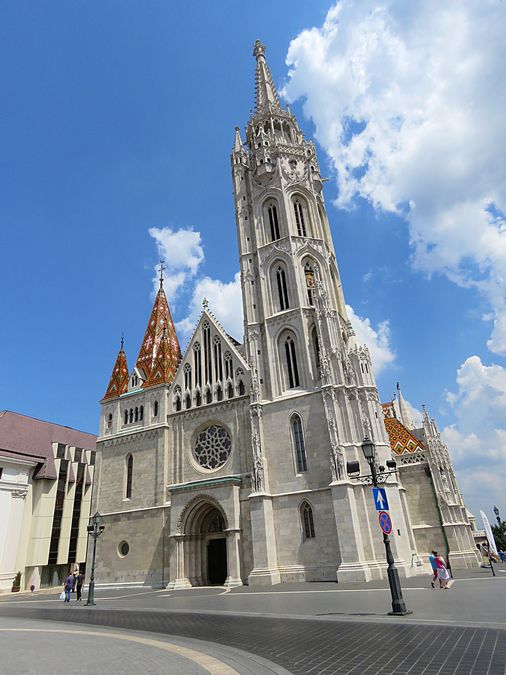
The front of Matthias Church
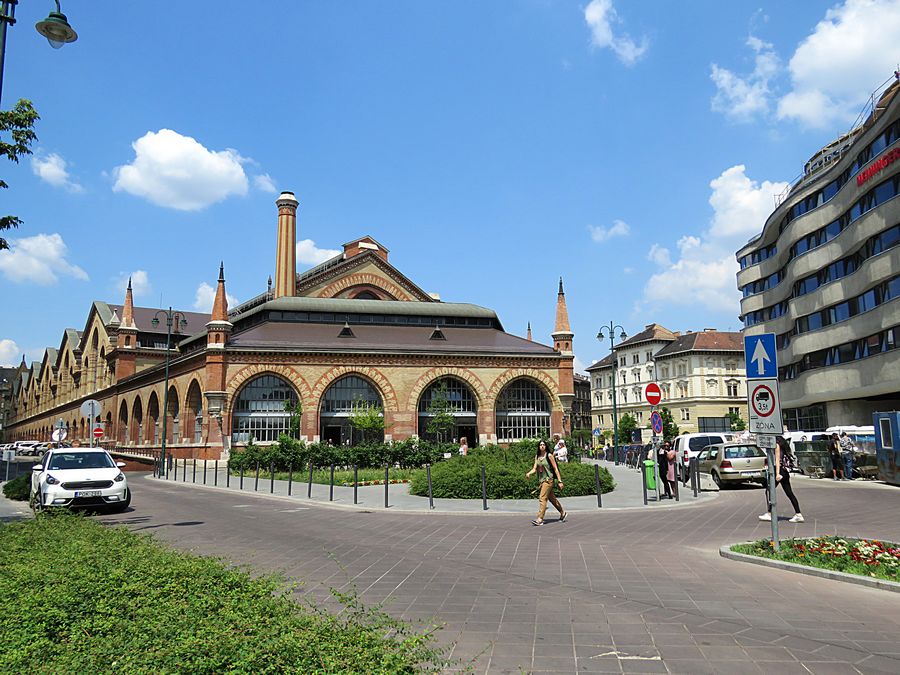
The Great Market Hall or Central Market Hall - the largest
and oldest indoor market in
Budapest. The idea of building
such large market hall came from the first mayor of Budapest,
It is located at the end of the famous pedestrian shopping
street Vaciutca and on the Pest side.

Most of the stalls on the ground floor offer produce, meats,
pastries, candies, spices,
and spirits. The second
floor has mainly eateries and souvenirs. The basement
contains butcher shops, fish market, and picked vegetables
including the traditional
cucumber pickles, as well as
cauliflower, cabbage, beets, tomatoes, and garlic.
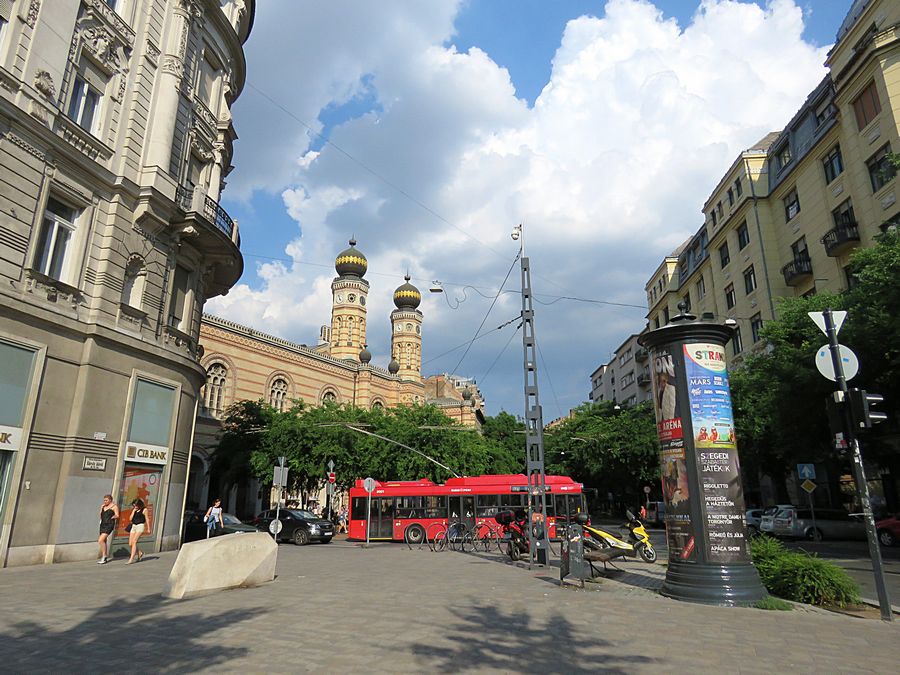
The Dohany Street Synagogue, also called the Great Synagogue.
It is the
largest synagogue in Europe and the second largest in
the world.
It seats 3,000
people.

Built between 1854-1859 by the Jewish community
of Pest,
The synagogue was bombed by the Hungarian pro-Nazi
Arrow Cross Party on
February 3, 1939. Used as a base for
German Radio and also as a stable during
World War II,
the building suffered some severe damage from aerial raids during
the Nazi Occupation but especially during the Siege of Budapest.
During the
Communist era, the damaged structure became again a
prayer house for the
much-diminished Jewish community. Its restoration
and renovation started in 1991,
financed by the state and by
private donations, and was completed in 1998.

Inside the Synagogue
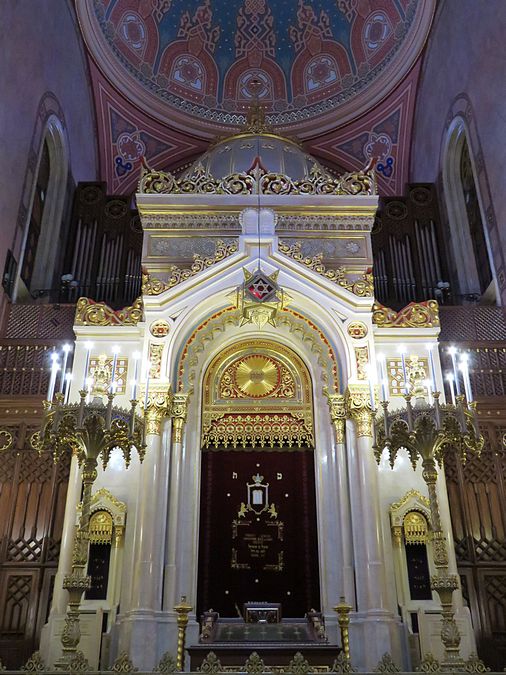
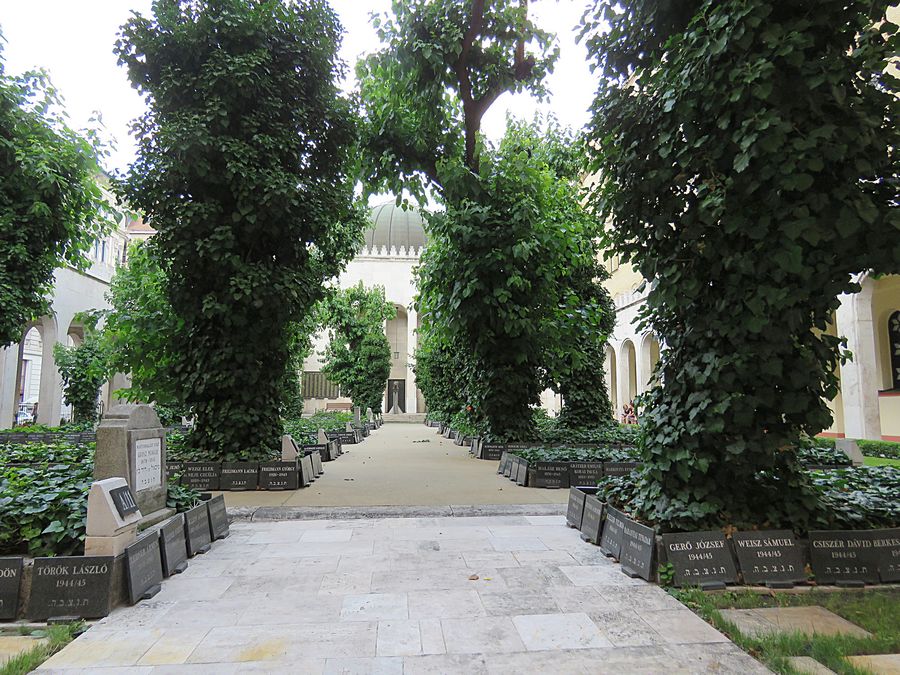
In 1944, the Dohany Street Synagogue was part of the Jewish Ghetto
for the city Jews and
served as shelter for many hundreds. Over two thousand
of those who died in the ghetto
from hunger and cold during the winter 1944-1945
are buried in the courtyard of the
synagogue.
It is not customary to have a cemetery next to a synagogue,
and the establishment of the
cemetery was only the result
of historical circumstances. In 1944, as a part of the Eichmann
plan, 70,000 Jews were relocated to the Ghetto of Pest. Until January
18, 1945, when the
Russians liberated the ghetto,
around 8,000 to 10,000 people had died, although, one part
of the deceased were transferred to another cemetery, but
2,000 people were buried in the
makeshift cemetery.
In memory of those who had died, there is a memorial by
the sculptor,
Imre Varga, depicting a weeping willow
with the names and tattoo numbers of the dead and
disappeared just behind the Synagogue, in the Raoul
Wallenberg Holocaust Memorial Park.

The Hungarian State Opera House - a neo-Renaissance opera
house located in
central Budapest, on Andrassy St.
Originally known as the Hungarian Royal Opera
House. It was undergoing renovation while we were there.
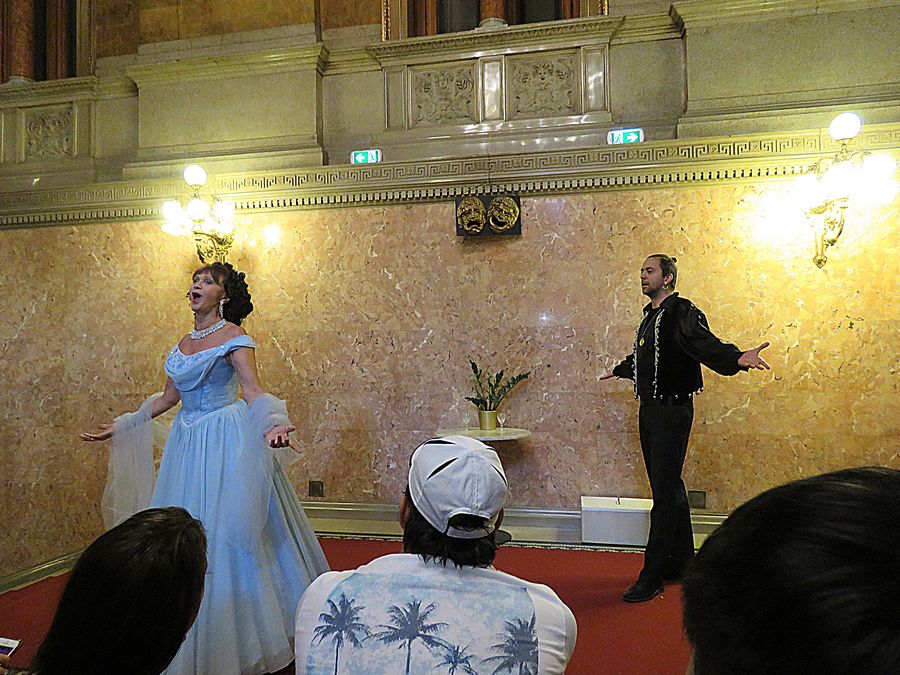
We could not view the entire Opera House.
A couple of performers sang a few
songs for the group taking the limited tour.
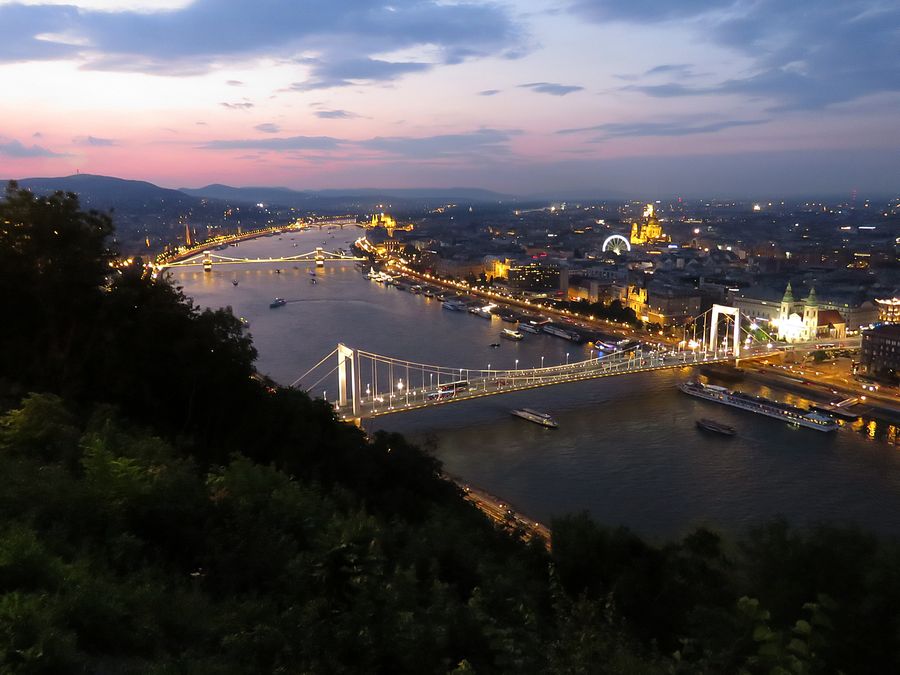
View of Budapest and the Danube River from
Gellert Hill as the sun was setting.
Elizabeth Bridge is in the foreground.
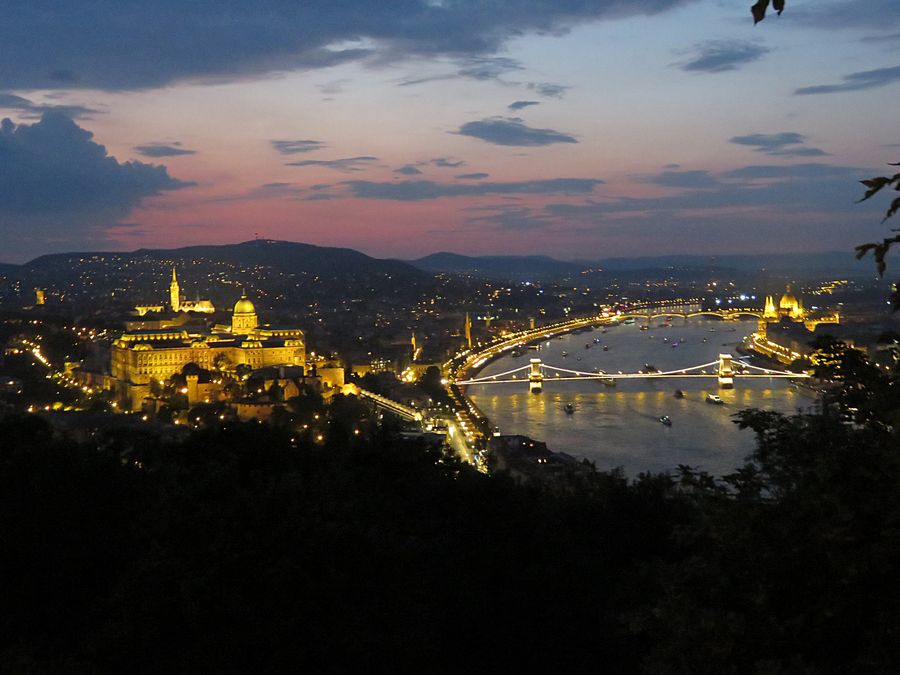
This view shows Buda Castle and Matthias Church
as well as the Chain Bridge
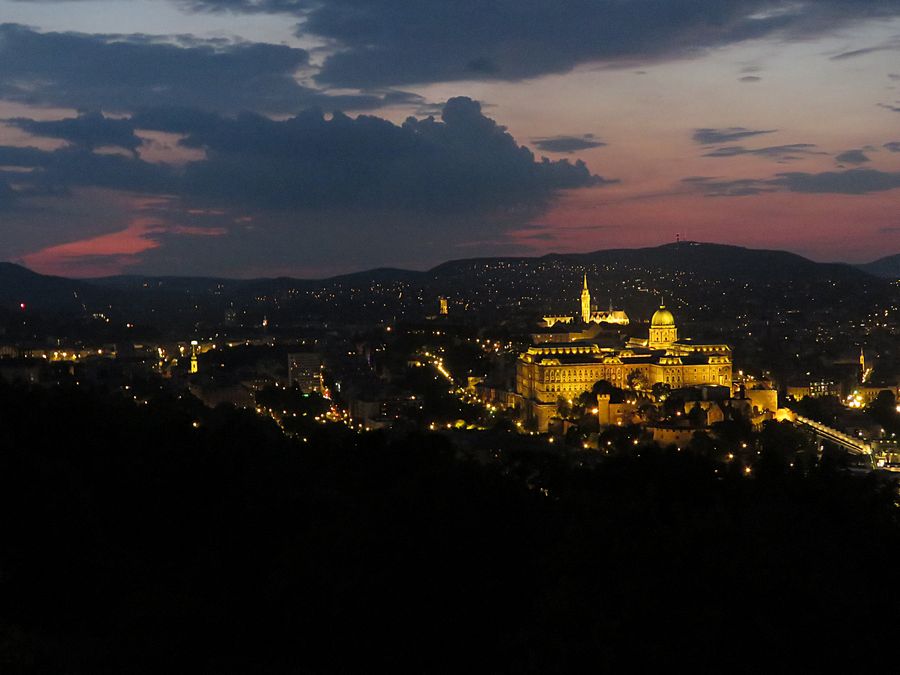
Buda Castle, Matthias Church, and the hills to the west
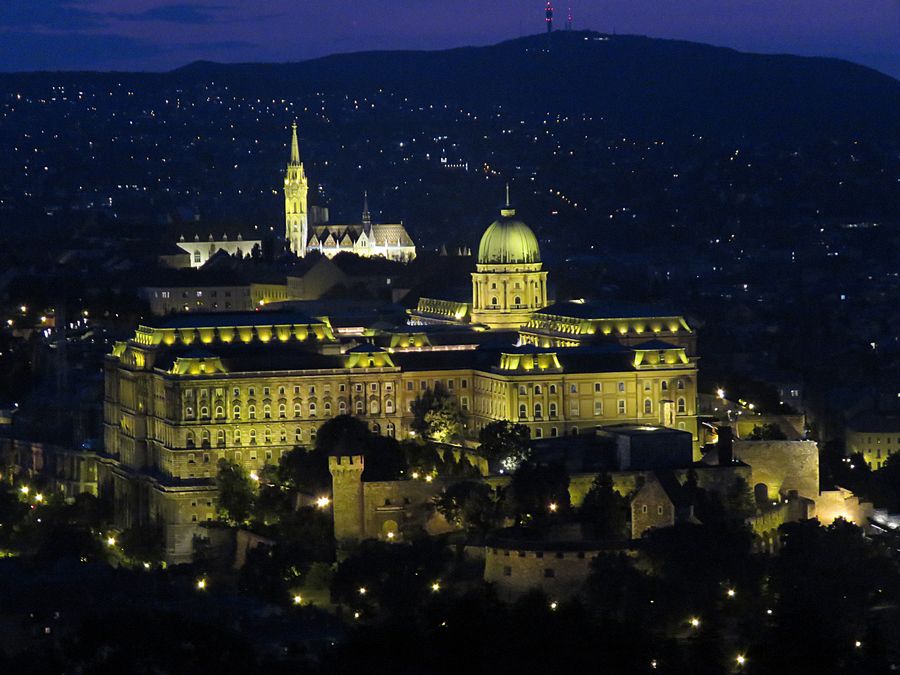
Closeup of Buda Castle and Matthias Church at night
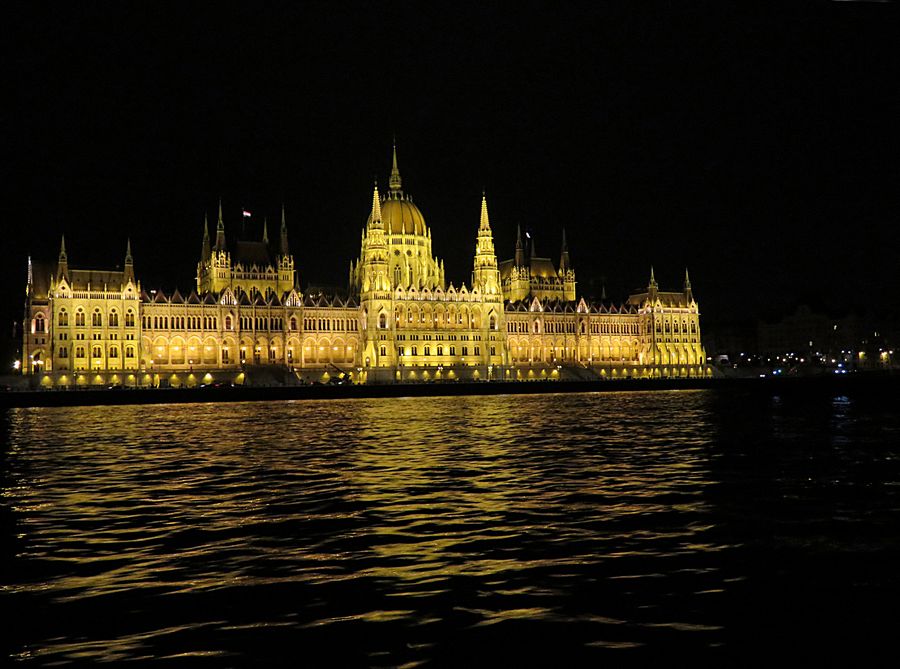
Hungarian Parliament building as seen while
on a night time cruise on the Danube River.
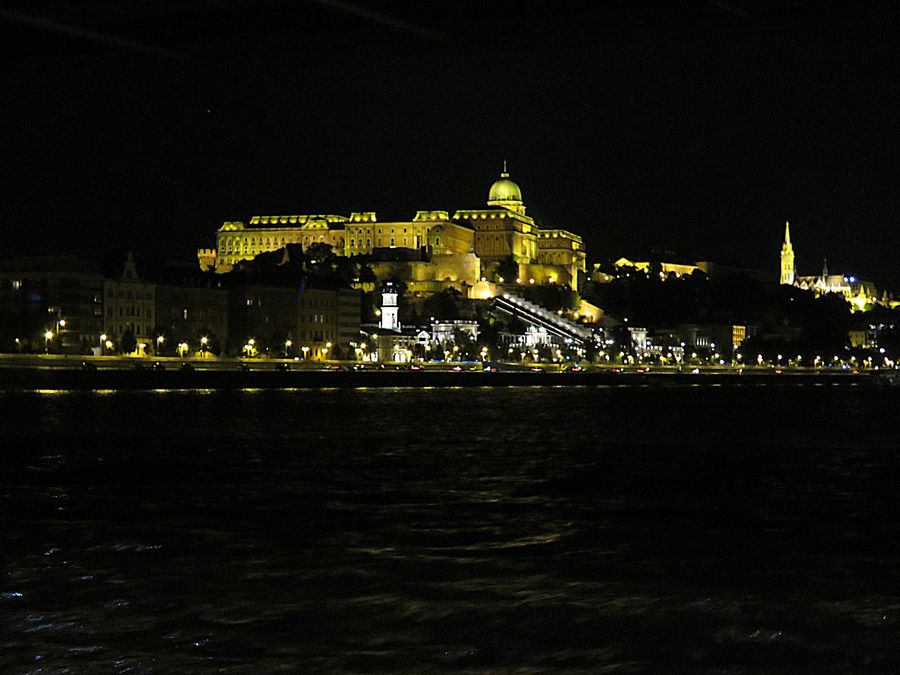
Buda Castle from the Danube River

Another view of the Hungarian Parliament
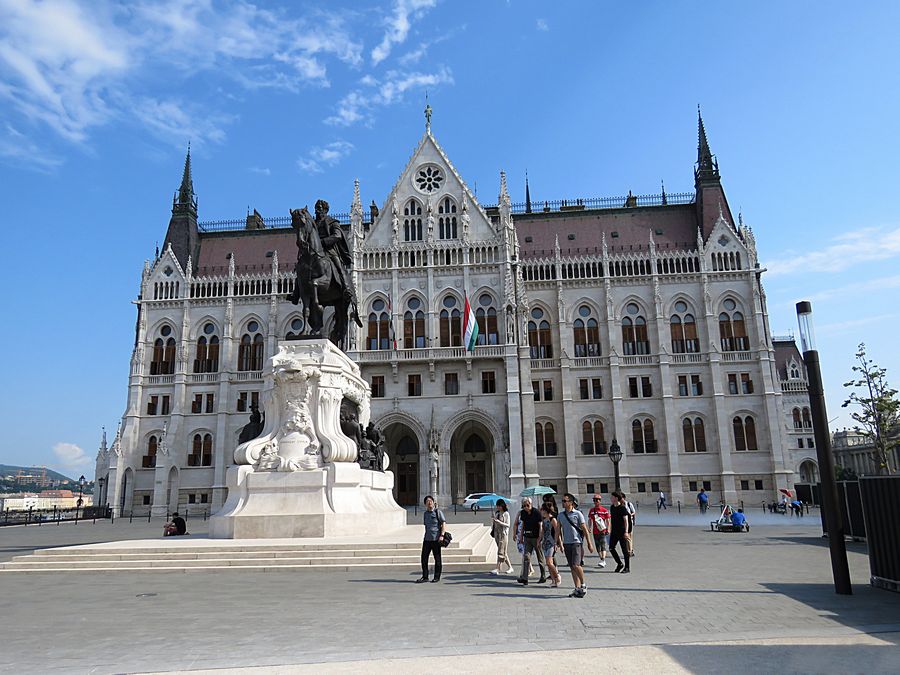
One entrance to the Hungarian Parliament
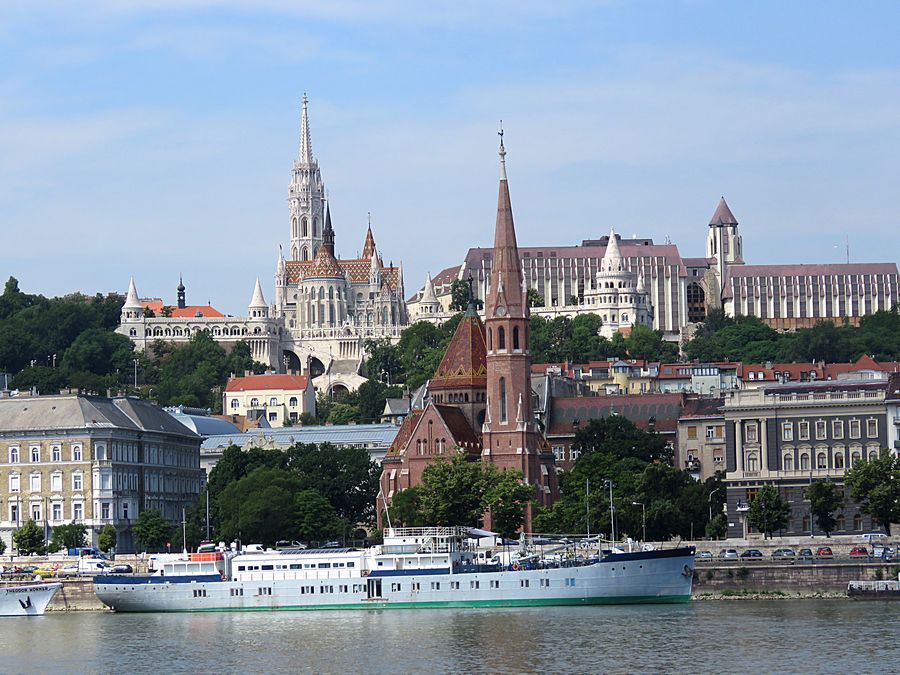
Fisherman's Bastion and Matthias Church,
as seen from the Pest side

The Shoes on the Danube Bank - a memorial in Budapest near Parliament.
Conceived by film director Can Togay, he created it on the east bank of the Danube
River with sculptor Gyula Pauer to honor the people who were killed by Hungarian fascist
Arrow Cross militiamen in Budapest during World War II. They were ordered to take
off their shoes, and were shot at the edge of the water so that their bodies fell into
the river and were carried away. It represents their shoes left behind on the bank.
Most of the murders along the edge of the Danube took place around
December 1944 and January 1945, when the members of the Arrow Cross Party
police took as many as 20,000 Jews from the newly established Budapest ghetto
and executed them along the river bank.

Hungarian Parliament Building - the National Assembly of Hungary,
a notable landmark of Hungary, a popular tourist destination in Budapest. It is
in Lajos Kossuth Square, on the bank of the Danube. It is the largest
building in Hungary and it is still the tallest building in Budapest.
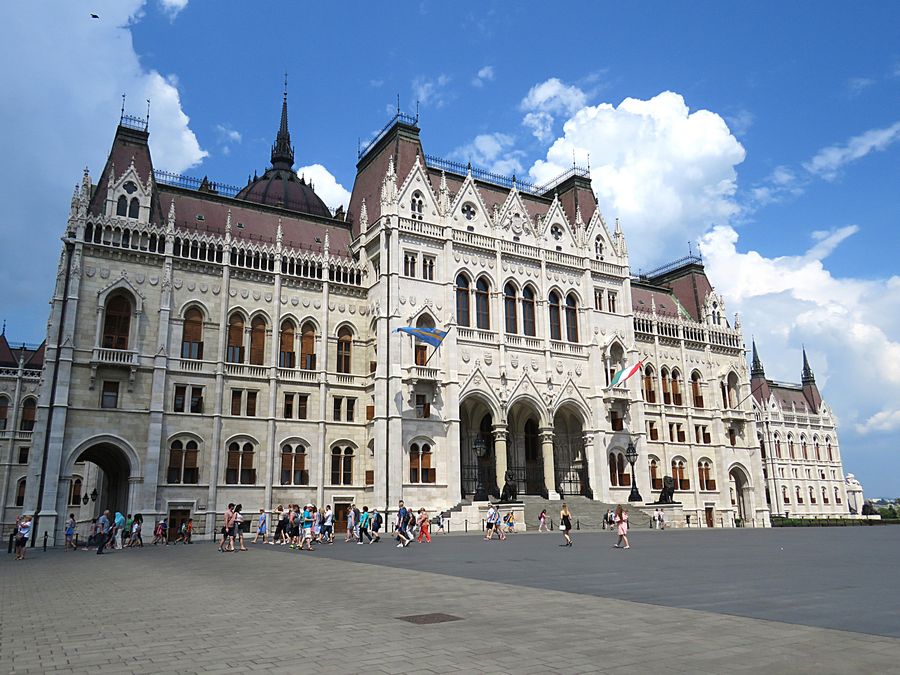
The main façade overlooks the River Danube,
but the official main entrance is from
the square on the east side of the building.

Statue of U.S. President Ronald Reagan not far from
the Hungarian Parliament and near
the U.S. Embassy.
It is there because the Hungarian people wanted to show their
appreciation for
the former U.S. president's efforts
in ending the Cold War, which in turn helped to
end the Russian influence in Hungary.
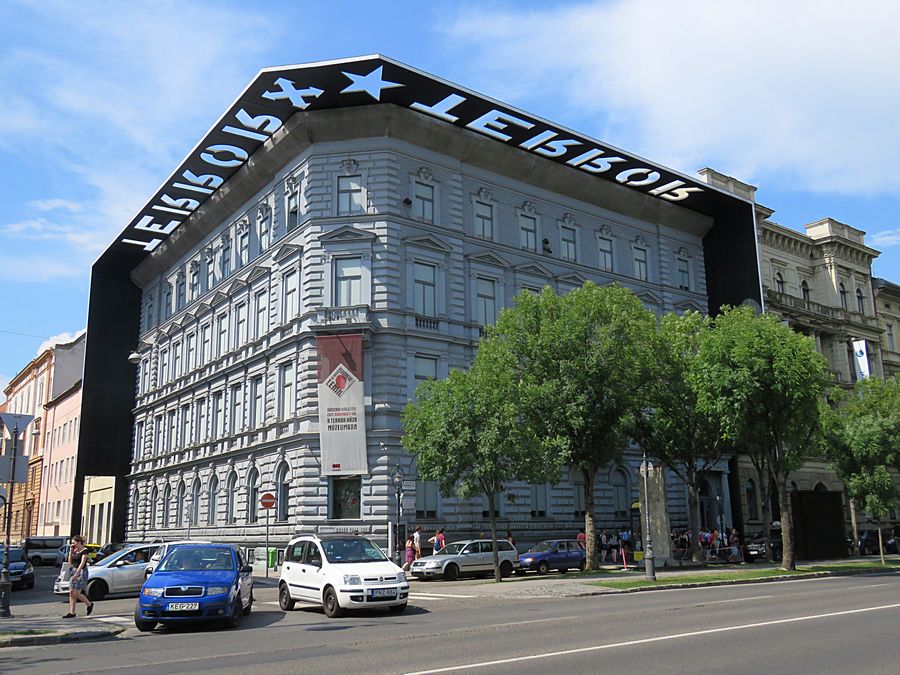
House of Terror - a museum located at Andrassy St. in Budapest. It contains
exhibits related to the fascist and communist regimes in 20th-century Hungary
and is also a memorial to the victims of these regimes, including those detained,
interrogated, tortured or killed in the building. It was the headquarters of the
dreaded secret police. It was here where people before and after WWII were
taken for interrogation and torture. The museum opened in February 2002.
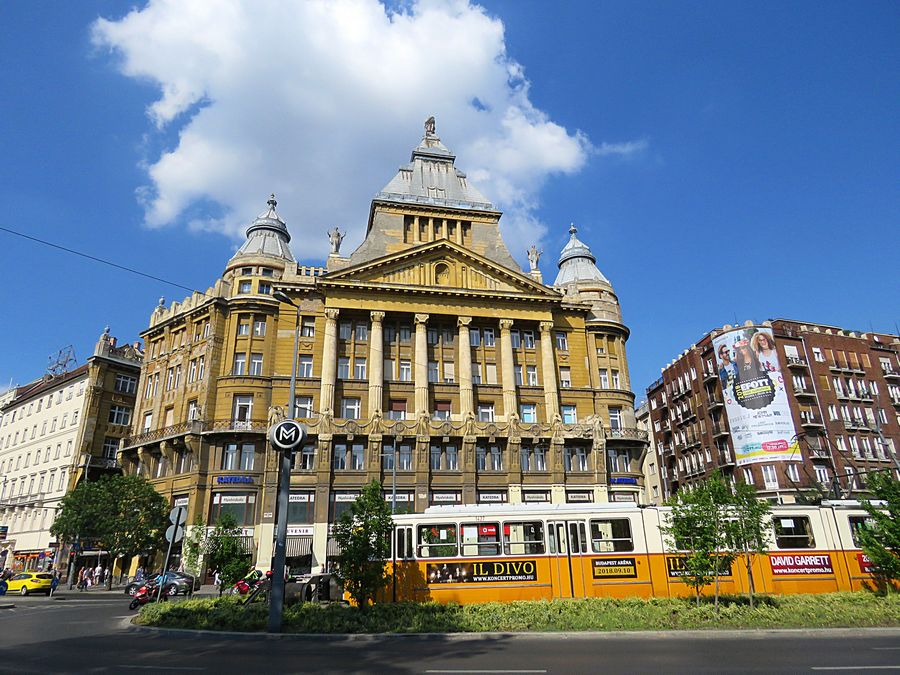
An example of the traditional architecture in Budapest

The Hungarian National Museum - the national museum
for the history, art and
archaeology of Hungary,
including areas not within Hungary's modern borders
such as Transylvania.
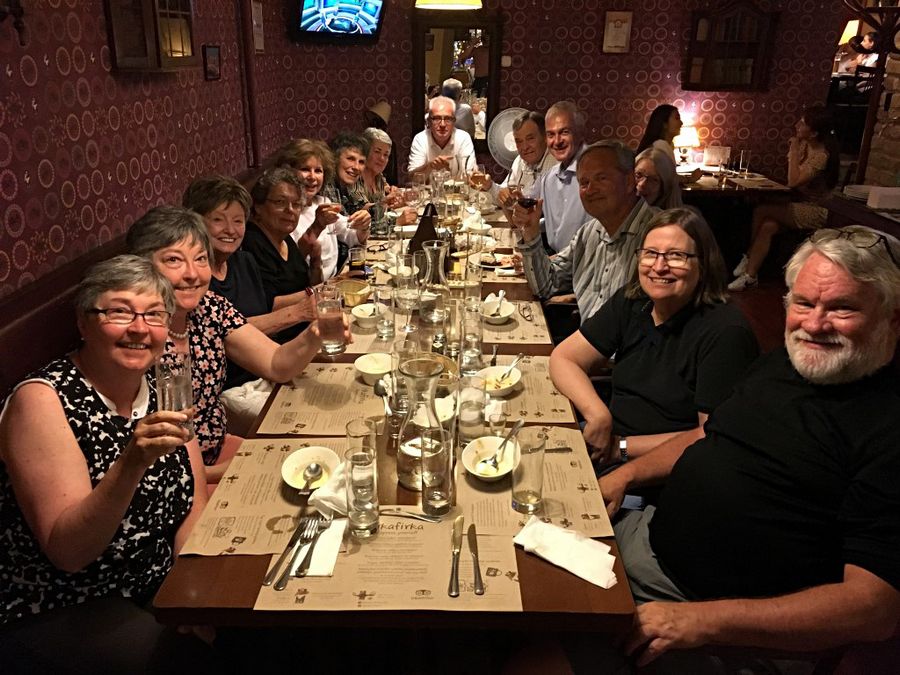
Farewell dinner in Budapest - June 5, 2018
Link back to Page 1 - Jewels of Bohemia
Pat's Home Page